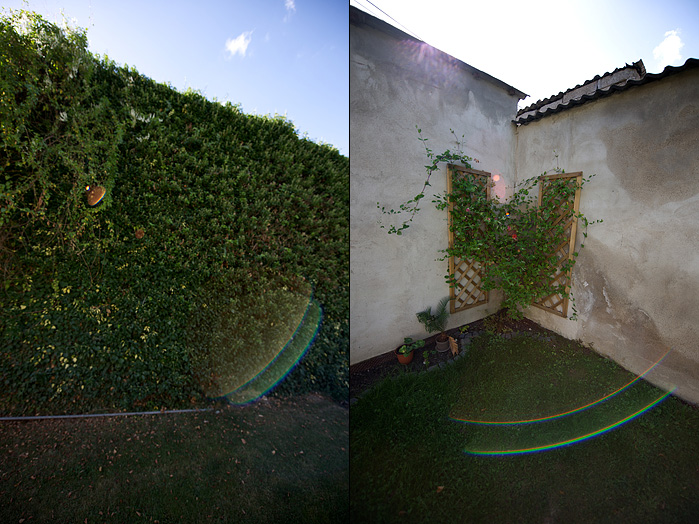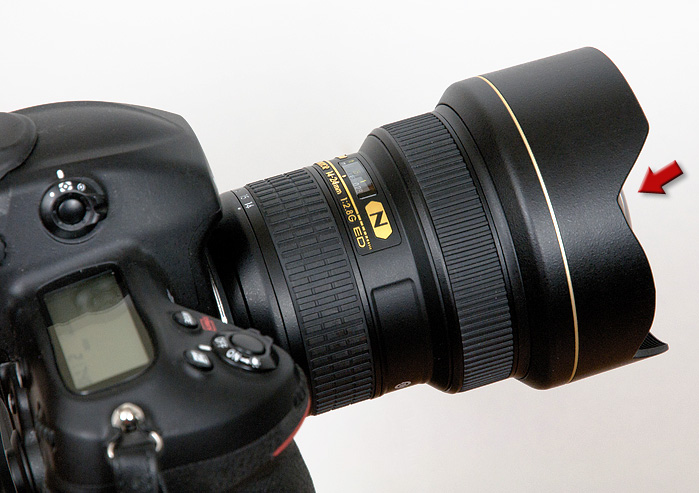|
Page 2 of 2

Distortion
The Nikkor AF-S 14-24 shows a surprisingly low amount of distortion on the DX sensor. At 14mm, there's a moderate barrel distortion (around 1.4%), at longer focal lengths distortion decreases to much lower amounts that should be no issue for most subjects.
|
Move the mouse cursor over the focal length text marks below to observe the respective distortion
|
| 14mm |
18mm |
21mm |
24mm |
|

|
The chart above has a real-world size of about 120x80cm.
Vignetting
Typical for most fast zoom lenses, there is some light fall-off towards the corners at f/2.8 that might be visible and disturbing for some critical subjects. Stopped down to f/4 and beyond, vignetting is no longer an issue at all focal lengths.

MTF (resolution)
The lens produced impressive resolution figures on any camera we tested it on so far and it continues to do so on the D7000.
At all focal lengths the center resolution is excellent wide open already and remains on this very high level until diffraction kicks in at f/11. The lens obviously outresolves the high resolution sensor of the Nikon D7000 at several focal lengths.
The borders and corners show very good resolution at all tested focal lengths and apertures, the only exception being the extreme corners wide open at 24mm, where the sharpness is a bit lower.
Please note that the MTF results are not directly comparable across the different systems!
Below is a simplified summary of the formal findings. The chart shows line widths per picture height (LW/PH) which can be taken as a measure for sharpness.
If you want to know more about the MTF50 figures you may check out the corresponding Imatest Explanations

Chromatic Aberrations (CAs)
Chromatic aberrations (color shadows at harsh contrast transitions) are quite pronounced at the shortest focal length, reaching peak values of around 2 pixels. Stopping down reduces the amount of CAs, as does zooming in: towards the longer end of the zoom range, CAs are significantly lower.
However, CAs can easily be corrected in software or by the camera itself (most modern Nikon DSLRs remove CAs themselves if you shoot JPGs).

Flare
The lens' huge front element seems to collect sunlight from almost anywhere and as result the Nikkor 14-24 is very prone to flare.
The sample images below where shot with an FX camera, but are reused here since they illustrate the issue quite well. In addition, most of the flare issues happen within the image area that is covered by the DX sensor.
Note that these are web-sized full images, not crops.

Ok, these first two images are a bit unfair to start with. They were taken straight into the sun or with the sun just outside the frame.
The vast majority of lenses would produce flare here and it just shows that the Nikkor
is no different. However, the amount of flare, especially towards the border opposite to the source of light, is rather high.
The 2nd set of images is different, though. You may notice that in these shots the sun is actually coming from slightly behind the camera, still there are pronounced flare spots.

As mentioned the Nikkor has a very protruding front element and at the wide end, the fixed lens hood is not able to provide full protection, even if the source of the light is slightly behind the camera. In the shot below you can clearly see that parts of the front lens are visible at such angles, too. This way, the lens manages to "bend" sunlight and thus flare into the image when you really wouldn't expect it.

Sample Shots
Full size sample images are available in our FX review of this lens.
VerdictThe Nikkor AF-S 14-24 is an impressive wide angle zooms lens that outperforms most of the prime lenses in its range resolution wise, with its fast aperture allows for low light shooting (or alternatively some object separation with limited depth of field) and is built solid enough to withstand the hard treatment of a working professional (allthough this, combined with the huge amount of glass, makes it the heaviest wide zoom around and also one of the most expensive).
However it's not without flaws. Where there's light, there's shadow, and if you shoot it with this lens there's likely some flare, too. Some vignetting is visible wide open, but stopping down easily resolves this issue. Distortion is well controlled on the DX sensor, with moderate barrel distortion at the wide end and low to basically none distortion towards the long end of the zoom range.
Some will dislike that there's no filter thread, but third party solutions are available nowadays. However, they add weight, bulk and cost to a lens that features these three attributes itself already.
Nonetheless, in summary it's an excellent lens and for those who can live or work around its issues it's still one of the most attractive wide zooms lens available. Highly recommended!
|